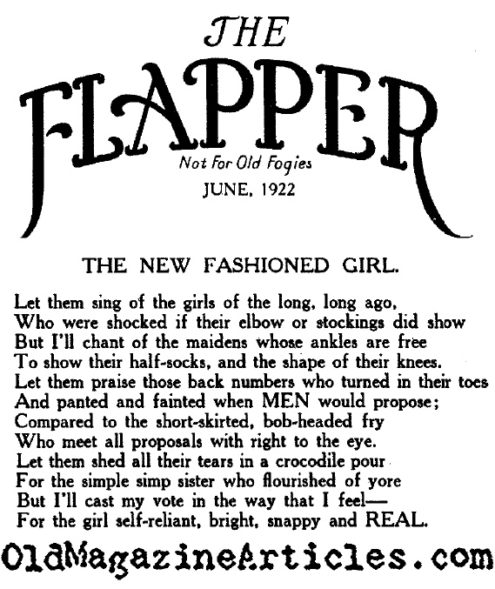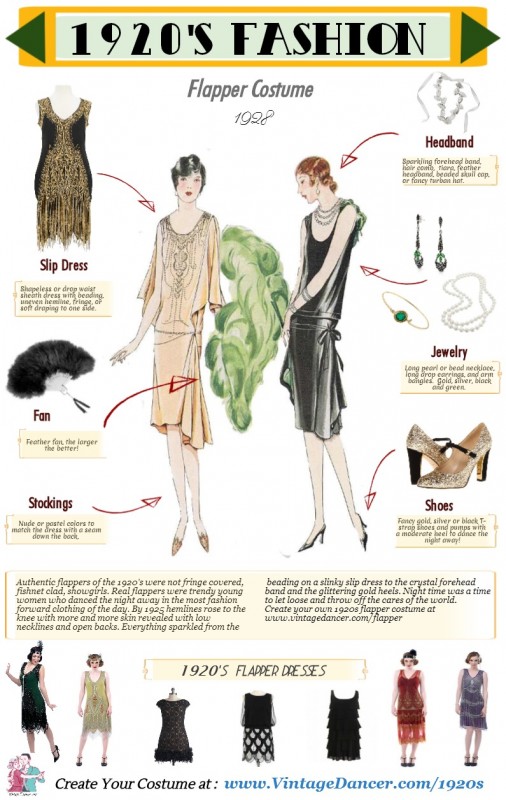Where the name 1920s flapper comes from is not exactly clear. Some claim it has to do with the “flap flap” sound young girls’ open galoshes made when they walked.
Another theory is that flapper dates back from before World War I, when it originally meant prostitute but came to refer to any woman with a boyish figure.
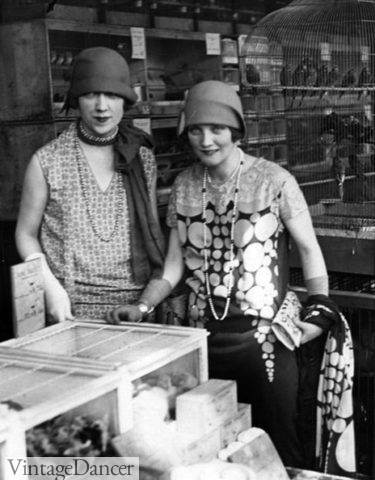
1925 long necklaces for these fashionable ladies
Yet another theory is they these young women were “little birds” learning to take flight and flap their wings.
Wherever the term came from, the 1920s flapper and her unmistakable outfit — short drop-waist dresses, bobbed hair, heavy makeup, and (shocking!) rolled down stockings — is a critical part of 1920s history.
Who were these 1920s flapper girls wearing such scandalous fashions? Read on.
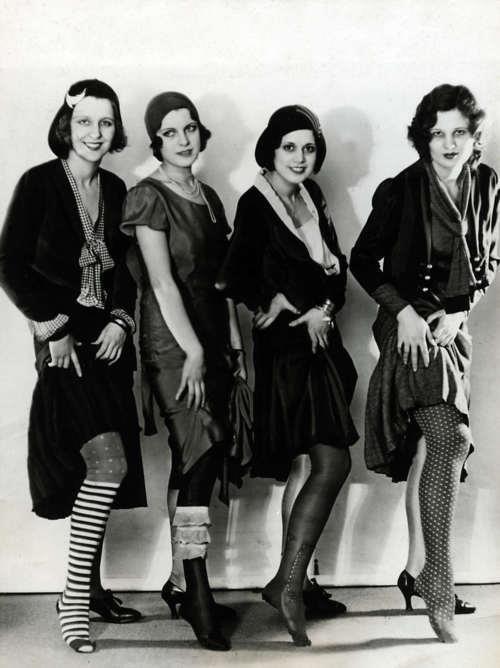
Flappers wearing pattern stockings
The flapper came in many forms: semi-flapper, the flapper, and the superflapper.
Semi-flappers admired the style and freedoms of real flappers but still maintained values and conservative tastes when it came to pastimes such as drinking and sex.
Ellen Welles Page wrote in 1922, “…some of the most thoroughbred superflappers might blush to claim sistership or even remote relationship with such as I. I don’t use rouge, or lipstick, or pluck my eyebrows. I don’t smoke (I’ve tried it, and don’t like it), or drink, or tell ‘peppy stories’ I don’t pet.” (Source)
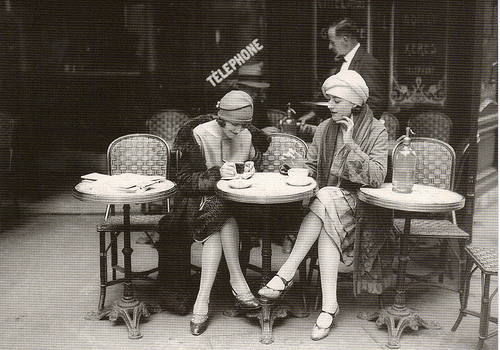
Flappers in Paris
By the end of the 1920s, most women all of all ages would fit the “semi-flapper” label. The genuine flapper was typically part of the college scene. Young and intelligent, she dressed in the latest fashions, rode in fast cars with men, lived in the city, and watched all the latest movies.
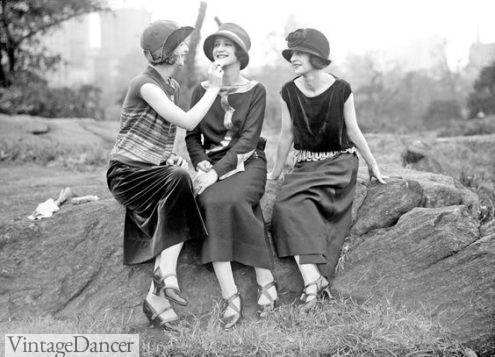
The Duncan Sisters, American vaudeville duo who became popular in the 1920s with their act Topsy and Eva.
The superflapper was the extreme woman of the ’20s. Her morals were as loose as her clothes. She made regular appearances in F. Scott Fitzgerald’s novels and essays. In fact, Fitzgerald declared that his wife, Zelda, was the “first American flapper.”
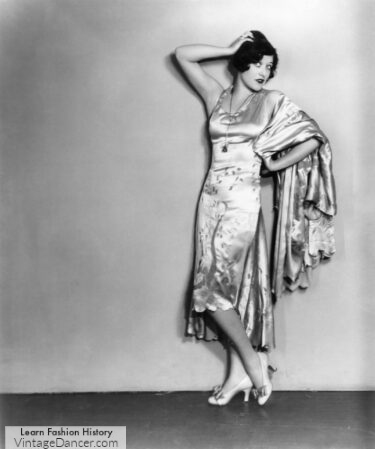
The superflapper lived her life moving from one party to the next, dating one man after the other, and spending money as quickly as she acquired it. She was either envied or scorned by public opinion.
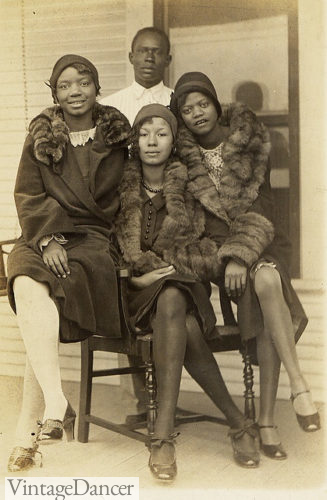
Flappers were not just white. Any young woman in the 20s who dressed well, danced and enjoyed life was a “flapper.”
The degrees of flapperdom were as varied as the women themselves. They were primarily in the city, but with the widespread distribution of magazines, advertising, and mail order catalogs, the flapper fad spread to some of the most remote parts of the country.
Young girls not even in their teens yet begged parents to buy, instead of make, their clothes. One outfit would not do. They needed new clothes for every day, every season.
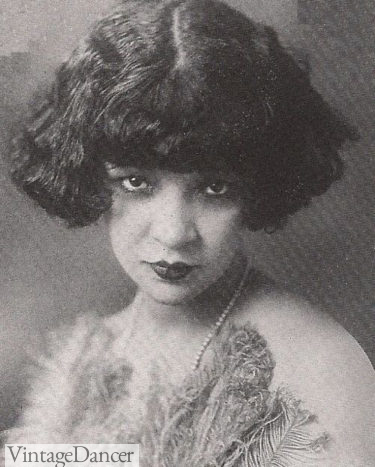
Wavy bob with bangs
They bobbed their hair with or without their parents’ permission. They spent more time with their friends going to movies and reading magazines than they spent at home with their family.
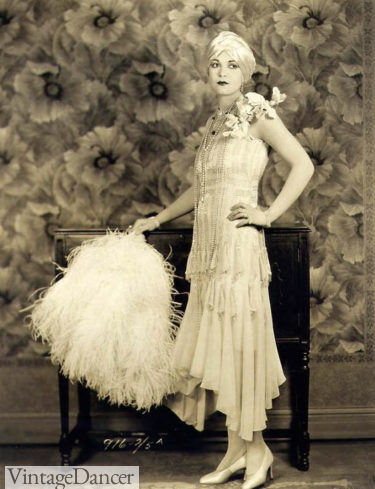
Tiered evening dress with large hand fan
If they did not wear the latest fashions, they were sure to come home in tears because they could not “fit in” with their friends anymore. The most popular girls knew how to roll down their stockings, dance the Black Bottom, and use all of the new lingo that trendy youth spoke. Sounds a lot like teenagers today, doesn’t it?
They were and still are young “flappers” trying to leave the nest to discover who they are apart from their parents.
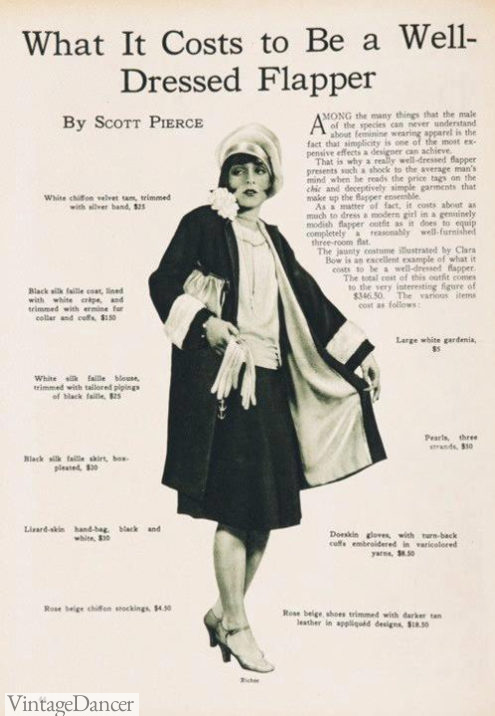
What it Costs to be a Well Dressed Flapper in 1927 from Motion Picture Classic. $150 coat, $25 blouse, $30 skirt, $20 handbag, $4.50 stockings, $5 flower clip, $10 pearl necklace, $8.50 gloves, $18.50 shoes for a total of $356.50, or about $3,500 in today’s money. Wow!
What happened to the 1920s flapper girl?
1925, Zelda Fitzgerald wrote, ”The flapper! She is growing old. She has come to none of the predicted ‘bad ends,’ but has gone at last, where all good flappers go — into the young married set, into boredom and gathering conventions and the pleasure of having children, having lent a while a splendor and courageousness and brightness to life, as all good flappers should.”
How to dress like a 1920s flapper?
Transform yourself into a Charleston dancing bright young thing with a complete flapper style dress.
Read how to dress like a 1920s flapper.
________________________________________________________________________
Further Reading:
FLAPPER – A wonderful look at the life of flappers. Who they were, what they stood for and how they dressed. Highly recommended.
From Flappers to Flivvers – This book is a collection of personal memories from young men and women who lived in the 1920s. Includes recollections on clothing, movies, radio, cars, music and dance. More insightful than any general history book. I learn something new every time I read it.
_________________________________________________________________________
Debbie Sessions has been teaching fashion history and helping people dress for vintage themed events since 2009. She has turned a hobby into VintageDancer.com with hundreds of well researched articles and hand picked links to vintage inspired clothing online. She aims to make dressing accurately (or not) an affordable option for all. Oh, and she dances too.
